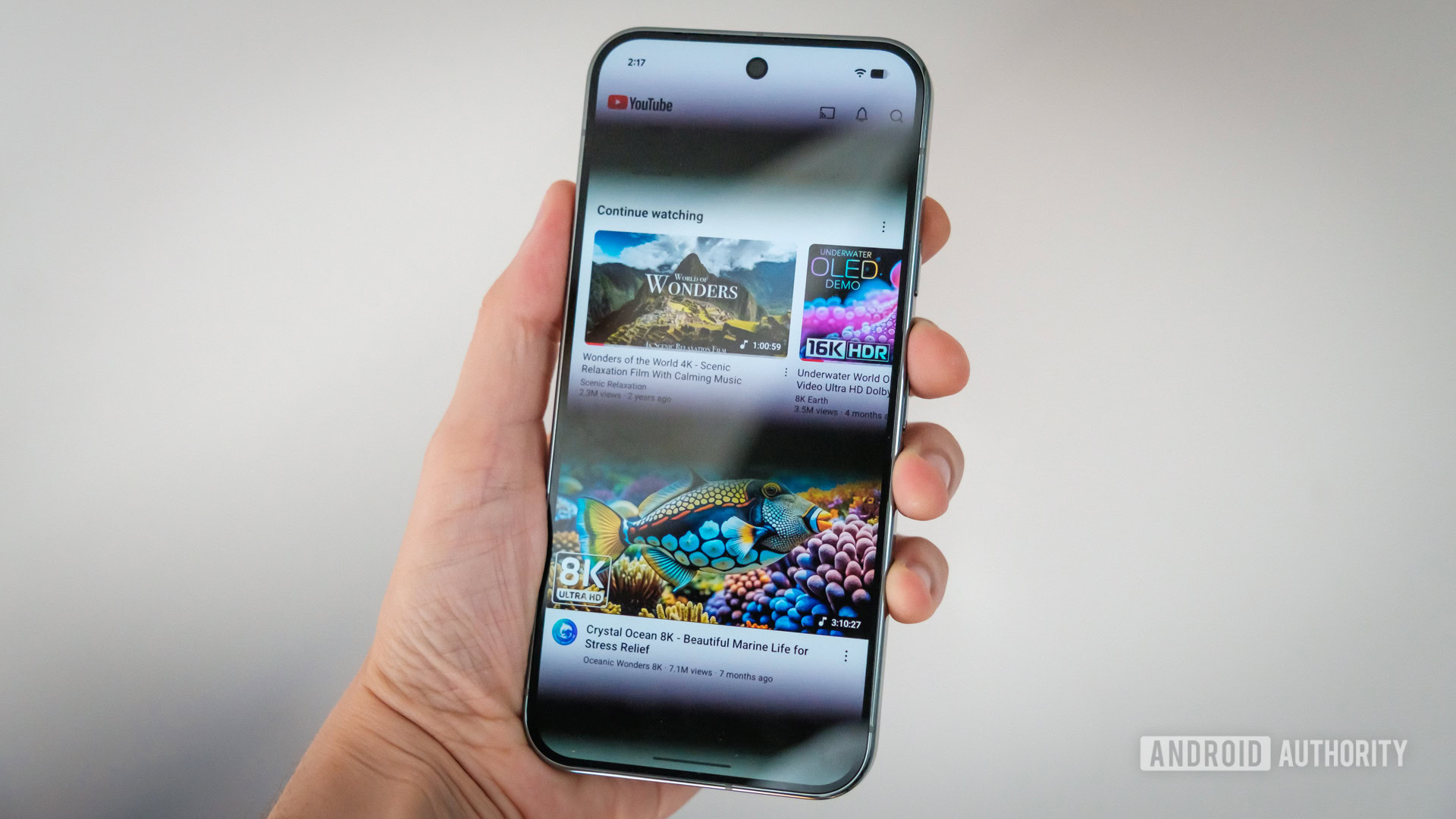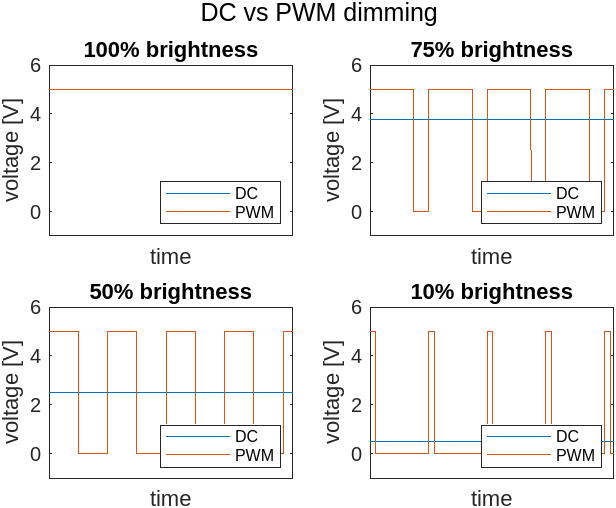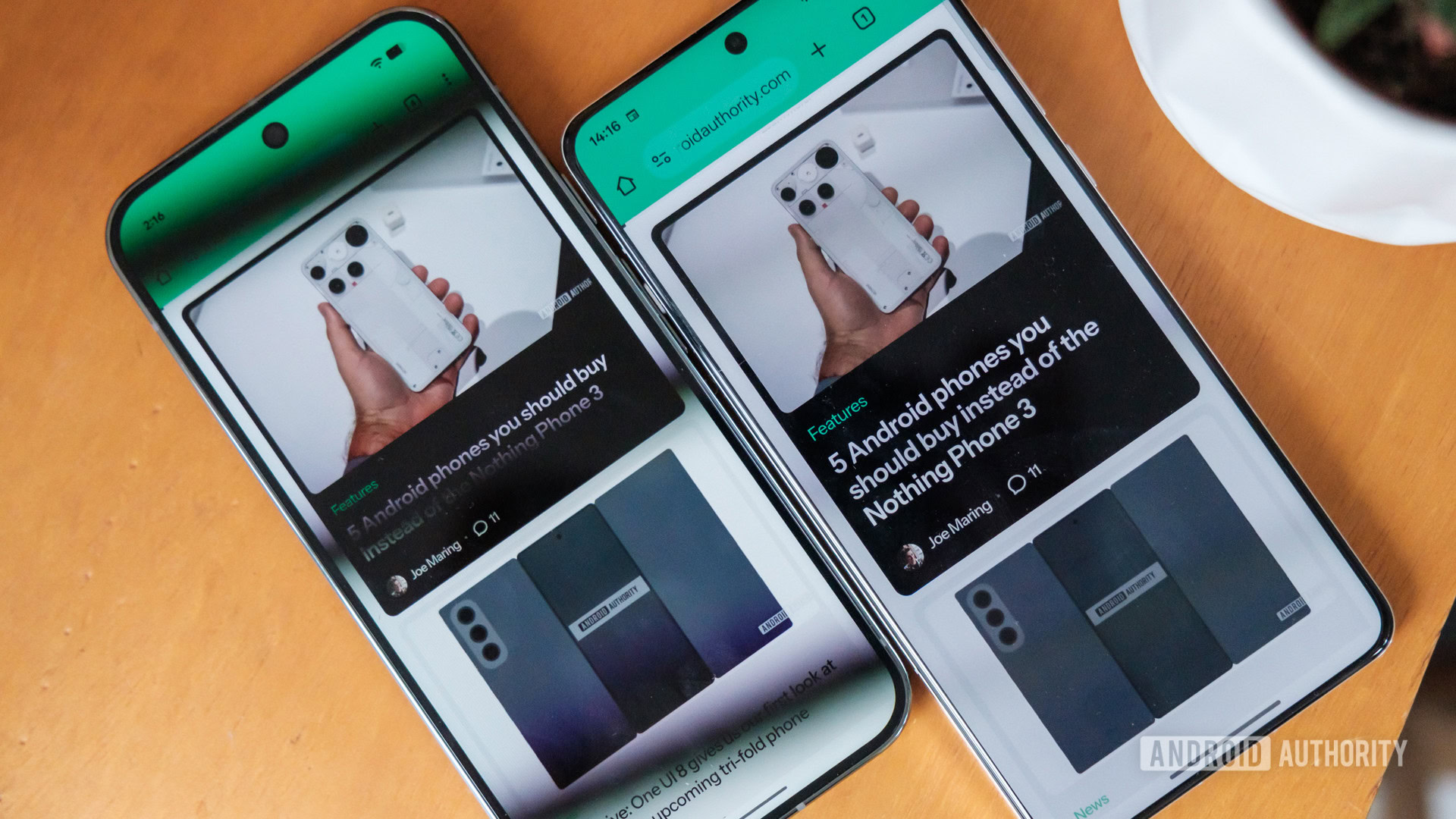
Robert Triggs / Android Authority
Google Pixel 10 rumors are coming thick and quick lately as we shut in on the launch date in only a few months. Final week, we realized the upcoming cellphone’s Professional fashions will probably ship with a 480Hz PWM display — a primary for the Pixel sequence.
Excessive PWM (Pulse-Width Modulation) charges aren’t new to smartphone shows; we’ve already seen telephones boasting 1000’s of Hz. The Xiaomi 15 Extremely affords a 1,920Hz PWM price, the OnePlus 13 clocks in at 2,160Hz, and the HONOR Magic 7 Professional tops out at a whopping 4,320Hz PWM. Even the budget-friendly Nothing Telephone 3a manages 2,160Hz PWM.
Is excessive display PWM vital when shopping for a cellphone?
0 votes
The Pixel 10 Professional and Professional XL gained’t match these heavyweights, but a bump to 480Hz will at the very least put them on par with the model’s closest rivals in the US, Apple and Samsung. In that sense, it’s a major transfer — but what does all this PWM stuff even imply, and must you truly care?
What does PWM need to do with shows?

C. Scott Brown / Android Authority
If you realize a bit about shows, you’ve probably come throughout Hz and refresh price, which measures what number of instances per second (in Hz) the display updates. 120Hz appears smoother than 60Hz, for instance. PWM can also be measured in Hz, but it’s unrelated to how rapidly your content material refreshes. As an alternative, the PWM price controls the brightness of the 1000’s of particular person LEDs lighting up your fancy OLED display.
Going again to some fundamental electronics: making use of 0 V turns an LED off, whereas making use of the most allowed voltage makes it shine at full brightness. There are two methods to attain a brightness that isn’t zero or full. Probably the most intuitive is to scale the voltage someplace between off and max.
Nonetheless, this isn’t all the time sensible for cellular shows, on account of the LEDs’ temperamental on-threshold voltage, the wasted energy from sustaining an intermediate DC stage, and the complexity of managing exact voltages throughout hundreds of thousands of sub-pixels. This isn’t an issue for older LCD-type shows, the place direct present dimming can simply management the complete backlight in a single go.

Kamila Wojciechowska / Android Authority
As an alternative, shows management LED brightness utilizing fast on–off pulses. Every LED toggles a whole bunch or 1000’s of instances per second, so rapidly that your eye perceives a gradual brightness fairly than flicker. That is achieved effectively with a clock driver embedded in the display controller, and it’s way more power-friendly since little vitality is wasted — essential for cellular gadgets. The tip result’s equal from a brightness perspective, as the common output of those on–off pulses matches what a relentless dimmed stage would produce.
If you happen to’re curious, recording slow-motion video in your cellphone digicam can typically reveal PWM flicker, showing as rolling bands throughout the display.
That mentioned, a number of telephones now use a hybrid strategy to dimming. For instance, the Samsung Galaxy S24 FE and Xiaomi 14T Professional provide “DC dimming” at excessive brightness ranges nicely above the on-threshold, then change again to PWM at decrease brightness settings. Right here, DC dimming actually means dropping the drive present in a single shot fairly than true per-pixel scaling.
Display PWM charges inform you how briskly the OLED lights flicker on and off.
OK, so now this begs the query: why do completely different smartphones have completely different PWM charges? Nicely, every display panel comes paired with its personal driver IC. Greater‑finish panels typically embody driver chips able to a lot larger PWM frequencies proper out of the manufacturing facility, but even high-end panels don’t all the time race to the largest doable numbers.
Even with the identical display driver chip, producers can tweak their PWM clock settings in firmware to hit particular targets — buying and selling off PWM price in opposition to general energy draw (together with switching losses vs peak brightness), regulator overhead, BOM price, and typically the precision of distinction and gamma management. Very excessive PWM frequencies, for instance, can scale back the variety of out there brightness steps, barely affecting clean gradients and tonal transitions. These trade-offs are balanced in a different way relying on every model’s priorities for battery life, display high quality, and eye consolation.
Why do PWM refresh charges matter?

Robert Triggs / Android Authority
Right here’s the catch: what in case your eyes or mind can truly detect that glint from a low PWM price?
Nicely, that is very a lot an actual problem, typically referred to as PWM sensitivity. It impacts everybody in a different way — some individuals not in any respect, others may ultimately really feel eye fatigue, and the unfortunate can find yourself with migraines or nausea.
If you happen to’re prone, PWM sensitivity is most frequently seen when viewing a tool in a darkish surroundings at low display brightness. That’s as a result of at decrease brightness ranges, PWM dimming runs at a low obligation cycle: the LEDs spend most of their time turned off, solely pulsing on for temporary moments to emit simply sufficient gentle. Mixed with a dimly lit room, these brief bursts may not register as seen flicker, but the nerves in your eyes — and in the end your mind — can nonetheless decide up on them.
PWM flicker could cause eye fatigue, complications, and even nausea in some individuals.
There’s no actual science on the preferrred PWM frequency, partly as a result of there are such a lot of variables in the case of particular person sensitivity, surroundings, and the way any modulation is applied. For many individuals, 480Hz doesn’t trigger any noticeable points, and telephones have been getting away with 240Hz with out triggering a wave of returns. Nonetheless, a rising physique of analysis means that these comparatively low values can nonetheless set off undesirable physiological responses in a large portion of the inhabitants.
As such, choosing a 1,000Hz or 2,000Hz display usually pushes you additional away from potential hurt, and these telephones are clearly the more sensible choice for anybody who has skilled fatigue or worse from their gadgets. But do victims proceed to profit from ever-higher values like 4,000Hz? That’s much less sure, as there’s certain to be a legislation of diminishing returns. Even so, greater numbers are usually “safer” from an eye well being perspective, and there are not any actual downsides from the standpoint of display high quality.
PWM velocity is vital, but it is not the solely factor to considder.
As with most issues, there are further nuances at play. PWM display waveforms don’t need to be sharp on–off pulses; superior driver ICs can form the modulation to ease eye pressure. Gradual ramping up and down (like a sawtooth or triangle wave) is an efficient various that goals to scale back PWM’s adversarial results with out merely cranking up the frequency.
Likewise, most smartphones use multi-phase PWM, making certain the complete display isn’t off at the identical time to assist common out the luminance your eyes detect. Then there are the aforementioned DC-dimming firmware tips that allow manufacturers promote “flicker-free” or “low-flicker” modes for enhanced eye consolation, though they nonetheless depend on PWM at low brightness.
After all, the finest resolution might be to have a little bit of every little thing. Simply take into accout it’s not all the time a clear-cut case of larger numbers being higher — although it definitely doesn’t harm to have the next PWM display in your subsequent cellphone. Whether or not the Pixel 10 Pro’s new display does sufficient right here remains to be very a lot up for debate.
Pixel takes one more half measure

Paul Jones / Android Authority
PWM price definitely isn’t the be-all and end-all of what makes an ideal display, but for some customers, it’s a vastly vital shopping for issue. Whereas eye-fatigue options are staple applied sciences throughout the trade, some main producers nonetheless fall brief in the case of tackling the particular discomfort brought on by low-frequency PWM at dim brightness ranges.
Traditionally, Google’s Pixel sequence has made no significant strides to deal with these considerations. Fortunately, the Pixel 10 Professional and Professional XL look set to supply a slight reprieve with their soar to 480Hz — a welcome enchancment that lastly begins to shut the hole. Nonetheless, it’s arduous to disregard that this advance solely brings Google according to what’s already grow to be a baseline elsewhere, and stays removed from the highest requirements now doable.
The Pixel 10’s 480Hz improve could be welcome, but remains to be behind the curve.
Maybe extra irritating is that this upgraded display is predicted to be unique to the Professional-tier fashions, that means anybody eyeing the commonplace Pixel 10 — or a future Pixel 10a — shall be left ready but once more. For a lot of, this gained’t be a dealbreaker. But for these delicate to display flicker or just hoping to reduce long-term eye pressure, Google’s cautious step ahead might really feel like too little, too late.
In the finish, it’s a optimistic transfer, but one which highlights how far more might nonetheless be finished. Right here’s hoping it gained’t take one other era or two earlier than these enhancements grow to be commonplace throughout the complete Pixel lineup.
Source link
#Pixel #Professionals #display #tackles #eye #pressure #leap #wanted


